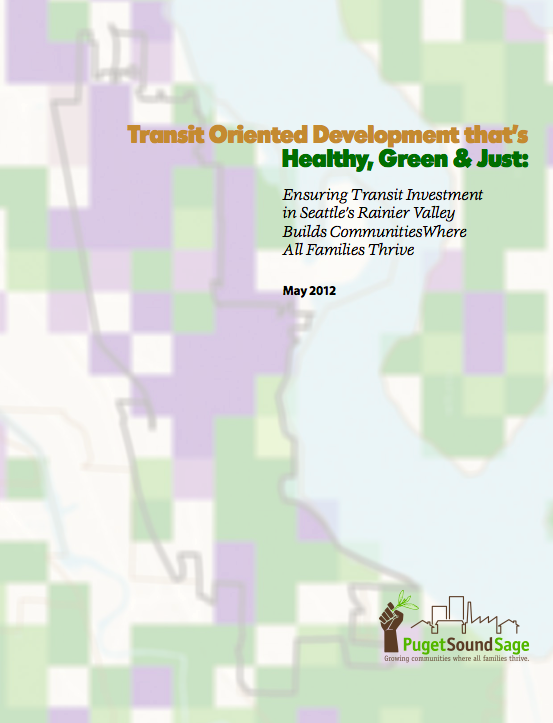Transit Oriented Development that’s Healthy, Green & Just
As the Puget Sound region invests billions in a new light rail system, many stake-holders, including community leaders, workers, equity advocates and planners, are asking– who will benefit? Will the advantages of living along light rail be shared by households of all incomes and people of all races and ethnicities?
May 2012 - Transit oriented development (TOD), holds tremendous promise and opportunity for communities of color and low-income households. But, strong evidence of gentrification and the threat of displacement in Seattle’s Rainier Valley, accelerated by the light rail, threaten to undermine this promise. Rainier Valley represents one of the most racially diverse areas in the Puget Sound and is also one of the first communities to receive light rail.
Ensuring that TOD results in real equity outcomes requires a sharp focus on what equity means and a steady determination to achieve those outcomes. By including a racial justice framework in TOD planning and policy in Rainier Valley, and beyond, we can help break the cycle of historical disenfranchisement and institutional barriers to prosperity.
TOD planning must tackle the threat of displacement head-on by addressing the structural challenges that place low-income people and communities of color at higher risk of being forced out. Furthermore, efforts to ensure racial equity in Rainier Valley must be proactive – we cannot wait until after displacement has taken place to act on the negative impacts of gentrification.
A strong commitment to racial equity will do more than address inequality.
With mixed-income households able to remain in Rainier Valley neighborhoods, broader goals for regional sustainability and healthy communities will be met. Through racial equity outcomes, people of all incomes and races are able to choose to live in central, dense neighborhoods and can avoid perpetuating suburban sprawl and auto-centric living.

